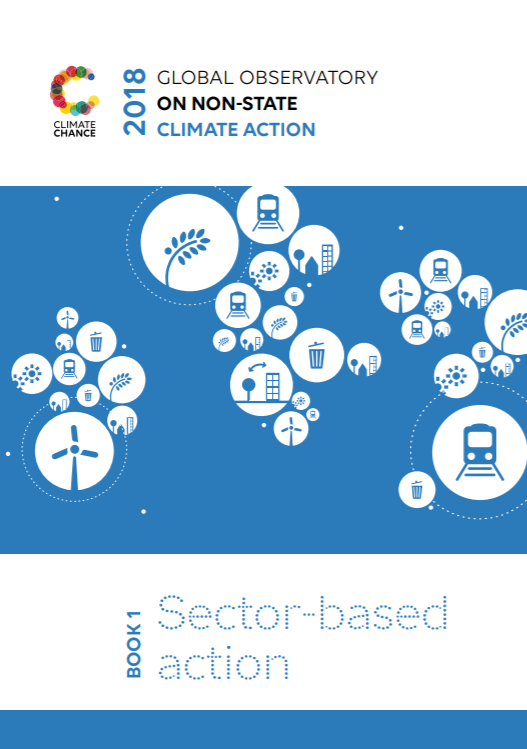
With an electrification rate of 87%, electricity has become a part of everyday life for the vast majority of people around the globe. The production of electricity and heat plays a central role in improving living conditions and economic development, but is also responsible for almost a quarter of manmade greenhouse gas emissions. Achieving a drop in emissions from this sector is therefore a major challenge in limiting the scale of global warming.
The category of fugitive emissions covers a vast number of poorly controlled emissions: accidental, diffuse or unproductive. Fugitive emissions represent a significant proportion of anthropogenic greenhouse gas emissions and their assessment, let alone reduction, is still in its infancy. Often overlooked by climate policies and institutional mechanisms, actions in this area rely primarily on the emitters themselves, pushed by civil society and local stakeholders.
Carbon capture and sequestration (CCS) prevents the release of greenhouse gases into the atmosphere by recovering carbon dioxide at the emitting facilities and then storing it or using it, possibly after transport. CCS could quickly reduce greenhouse gas emissions from power generation and industry without the need to reduce fossil fuel consumption. The technical feasibility of this solution has been demonstrated by pilot projects including Petra Nova which started in 2017. However, CCS struggles to get deployed: only 5 projects are underway in the world. We ask what the possible reasons for this reluctance may be.
Globally, rail is a mode of transport that does not emit much in the way of greenhouse gases. It also has much opportunity for improving its energy efficiency and reducing emissions (electrification). That’s why it is tempting to predict a bright future for it, but as this sheet shows, the reality is a little different…
Rapidly evolving over the past decade, international maritime transport contributes significantly to global anthropogenic greenhouse gas (GHG) emissions, exceeding those of the civil aviation sector. The establishment of the European Union MRV Regulation and the agreement adopted within the International Maritime Organization (IMO) can be a indicator of the beginning of a transition, provided that they lead to quantitative results. The past year has seen some interesting technological initiatives, driven by key industry stakeholders in the sector.
The industry is a very heterogeneous sector comprising many sub-sectors such as plastics, metallurgy, textiles and leather, agri-food, electronics, electrical equipment and machinery, wood and paper, chemistry and pharmacy, etc. Despite their diversity, these activities have in common the transformation of raw materials and energy – whose carbon footprint is relatively easy to evaluate – into much more complex finished or semi-finished products. They therefore have an important role to play, both in limiting their own emissions and in helping to decarbonise world consumption.
In its overall assessment of greenhouse gas emissions (GHG), the IPCC estimates in its 5th report that the land use and land-use change and forestry sector (LULUCF) is an important sector, responsible for 20 to 25% of global greenhouse gas emissions. Soil contains between 1500 and 2400 gigatonnes of CO2, about two to three times the amount of carbon in the atmosphere. The balance between release and storage of carbon in soil is crucial to maintain the climate balance, and the different scenarios envisaging carbon neutrality by the middle of the 21st century all rely on the capacity of forests, grasslands and wetlands to store a portion of the CO2 emitted. Maintaining forests is also a challenge in terms of biodiversity, rain regulation and local communities. «There is no need to cut down forests to produce more food» is the message hammered out by FAO in its 2016 report entitled «Forests and agriculture: challenges and opportunities for land use». According to the FAO, deforestation in the tropics and subtropics is mainly due to large-scale commercial agriculture (40%) followed by local subsistence agriculture (33%), infrastructure (10%), urban expansion (10%) and mining (10%), «with, however, significant regional variations».
The Paris Agreement encourages raising mitigation ambition in Nationally Determined Contributions (NDCs) by reviewing and assessing the strength of their ambition and to formulate long-term low greenhouse gas emission development strategies. The current NDC’s identify the transport sector as a significant mitigation source whose decarbonisation is critical in achieving economy-wide decarbonization. This chapter is a synthesis report analysing the most recent data from the road sector and the factors behind its growth and development. The main ambition is to provide a status of global climate action related to the road transport sector, and the synergies between the State and non – state actors.
With regard to climate change, air transport has two major characteristics. First, a strong growth in emissions that the technological and organisational progress is currently unable to contain. Second, international air transport has been excluded from the climate negotiations and the sectors covered by the United Nations Framework Convention on Climate Change (UNFCCC). The file was entrusted to the International Civil Aviation Organization (ICAO) that brings together the dominant players in the sector (manufacturers, airlines). This resulted in a proposal for the long-term management of air transport emissions: the CORSIA scheme for “Carbon Offsetting and Reduction Scheme for International Aviation”.


